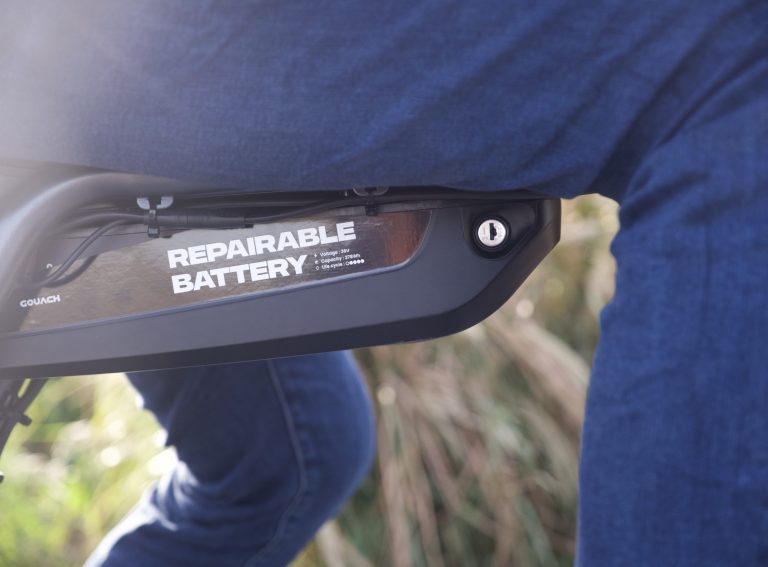This interview is part of the Market Movers series powered by global fleet optimisation provider Zoba, which shines a light on those working on the ground at shared operators to understand what it really takes to excel in micromobility.
Name: James Timmins
Position: Voi’s Senior Operations Manager
Name: Walter Pacquement
Position: Voi’s Head of Fleet Management Operations for UK and Ireland
Voi Technology operations: Both responsible for the city of Bristol, the UK’s largest e-scooter rental operation with more than 3,000 vehicles. Voi is also present in 16 other cities in the UK.
Backgrounds: Timmins brings eight years of micromobility experience in his locker – with previous positions at Zedify, ofo and an innovation lab at Jaguar Land Rover – while Pacquement comes from a financial background and previously ran operations in France, then helped launch the Italian market, before moving to the UK.
Zag Daily: Could you give us an overview of how the operations and partnerships work in Bristol?
WP: “We have just over 3,000 V5 e-scooters in Bristol, which are our latest model. Everything is operated from one warehouse in the Northeast of the city. For partnerships, we are currently trialling tuk-tuks internally for charging and collecting batteries to see how they can support us in accessing narrower roads and saving us time.”
JT: “We are also working with the sustainable delivery firm Zedify to broaden their tasks. Previously they were just doing fleet rebalancing, but now we’re trialling different Zedify vehicles like cargo bikes and trikes to run battery swaps and transports as well. We foresee doing more with them across the UK.”
Zag Daily: Voi has split the operations department into two divisions, which seems pretty unique. How does that work?
JT: “Yes, our new strategy to optimise operations splits in-field and analytics teams. So while Walter is involved with all the local warehouses and people out in the field to make sure everything is executed on a day-to-day basis, my role is about strategy, planning and analysis. So we feed analysis into some of the work they are doing to make sure we are optimising in the right way.”
WP: “This new organisational setup is a game changer. James is always analysing the data to understand what each market can do better. And then, once the process is thought through, my team of around 200 people across the UK works on how we can implement this, overseeing its impact in the field. It also ensures the process flows properly and that people are really clear on their roles so there’s no overlap.”
Zag Daily: How was the operations management set up before?
JT: “Previously we were operating in more siloed ways, with a structure for the infield, warehouse and analytical teams, who were all working to optimise the ways of working in a disjointed manner. For example, the warehouse team would repair vehicles, but then not have a clear process with the infield team to get those vehicles deployed quickly, meaning we were losing the benefit of their new repair efficiencies. Although we managed through this period well, looking back it has really become clear how well our new setup works.”
Zag Daily: What are the main challenges in Bristol from an operations perspective?
JT: “If you include the surrounding areas like Bath, we cover 60 square miles with enough parking space for 10k vehicles, which is the largest operating zone in the UK, so that brings a huge number of challenges. Given that it is also a very active scheme – we have just hit the 10m journey milestone – that means we have to make sure we are getting the team into the right areas at the right time, doing the right task, and staying on top of everything. This takes up probably the largest share of our time.
“We use a combination of features like ‘Max Capacity’ to provide the best service for the residents and the city. This limits the number of vehicles that can park in one location so we don’t end up with an oversupply, which would be problematic. At the same time, this brings other challenges as we have to make sure that users also have an enjoyable journey and don’t then suffer from oversupplied areas as well, so this is something we’re constantly trying to iterate on.”
Zag Daily: How do you manage to find that balance?
JT: “We measure the user experience in a number of ways to gauge the frustration of not being able to finish the journey where they would like, and also how well we are addressing that. We can measure how users interact with the app, how often they’re attempting to end their ride, are they clear on where they should be trying to end their ride? Some of our users didn’t know where to finish their journey so we added images into the app to show the parking geofence. And also the feedback they give when they rate the experience after a ride. Bristol has been a great testbed to push us to refine some of those methods.”
Zag Daily: What are some of your key ingredients to running a profitable operation?
WP: “For me, profitability is about having as much control as possible, whether working internally or with partners. Making sure that we have full visibility of how efficient we are, measuring for instance, how long it takes us to do a repair before the scooter is back out on the street again. Can we do anything to minimise our travel time? Can we minimise the tasks? All these steps allow us to keep track of every process and create synergies wherever possible.”
JT: “I would add that it is important to prioritise efforts that have the highest impact. The biggest driver of some of our costs is creating tasks. Being critical of why those are being created rather than simply following them in an efficient manner allows us to tackle the source of a problem. For example, in Bristol, rather than picking up the scooter and bringing it back to the warehouse to fix it, we are trying to do the small repairs on the streets. This saves our drivers time, and time is money.”
Zag Daily: Finally, you guys have an important role managing our country’s largest fleet. What are you doing to ensure Bristol does not follow the same fate as Paris?
WP: “Paris was one of the first cities to really push mobility forward, so it was difficult for us to see as we felt that the operations locally had improved so much from the early days of the scheme launching. In Bristol and the UK, I think we have a role to play to educate our users as much as possible so that they respect all the guidelines. We are very conscious that our scheme in Bristol needs to fit in with and improve both the city and the lives of the people that live in it, and are doing everything in our power to ensure the e-scooters become a staple of Bristol’s transport system.”





